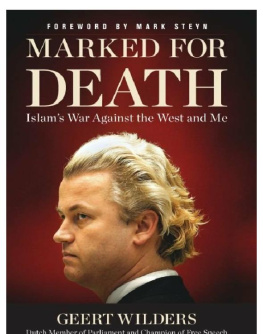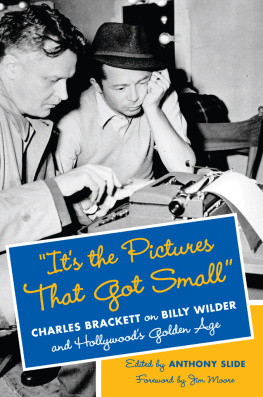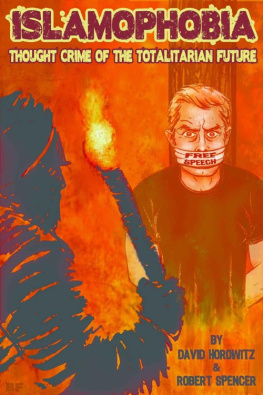CHAPTER ONE
The Axe Versus the Pen
The future doesnt belong to the fainthearted.
Ronald Reagan
On January 1, 2010, at 10:00 p.m., a 74-year-old man fled from his living room. As fast as he could move with his cane, he made for the bathroom and locked himself inside. Then there was a terrible banging on the bathroom door, the clang of steel on steel. Screams for Blood! and Revenge! rang out as someone hacked at the door with an axe, trying to force himself in, seeking to chop the old man to pieces.
The scene took place in a modest bungalow in Viby, a middle-class suburb of Aarhus, Denmarks second largest city. One observer compared the attack to the famous scene from Stanley Kubricks 1980 horror movie The Shining in which Jack Torrance, played by Jack Nicholson, maniacally chops his way through a bathroom door with an axe in an attempt to murder his wife.
The old man is Kurt Westergaard. I met him once. He is a tall, soft-spoken grandfather with a grey beard, invariably dressed in bright red pants, a black shirt, and a flowing red scarf. When he goes out, he wears a black Stetson hat. Black and red are the colors of anarchism, he says. He is an artist who prefers to paint landscapes, but prior to his retirement he made a living by drawing cartoons for Jyllands-Posten (the Jutland Post), a local newspaper in Aarhus.
In September 2005, Westergaards paper asked him, among other artists, to draw a cartoon of the Islamic prophet Muhammad. His editors planned to publish the drawings to address a growing trend of self-censorship in Europe on the topic of Islam. They were particularly bothered by an incident in which several artists refused to illustrate a childrens book on Muhammad, and the artist who finally agreed to do it insisted on anonymity. Westergaard accepted the papers request and recycled an idea he had drawn up twenty years earlieran image of a fierce-looking terrorist with a bomb tucked in his turban.
Westergaards cartoon has become an iconic image of our age, turning the kindhearted artist into the most hated man in Mecca.
And the cartoon led to the nightmare in Viby, where Muhudiin M. Geele, a 28-year-old Somali Muslim immigrant, turned up at Westergaards house with an axe and a butchers knife on New Years Day 2010. Luckily, due to the many death threats Westergaard had already received from Islamic extremists, along with a previous plot to murder him that resulted in three arrests, the Danish authorities had fortified the Westergaard home, installing bulletproof glass and surveillance cameras, reinforcing the front door, and crucially, transforming the family bathroom into a panic room with a steel door and an emergency button to contact the Viby police station.
Westergaard was sitting in his living room when Geele, who had broken into the garden, began to smash his way through the glass door to the living room. The door, made of reinforced bulletproof glass, eventually gave way, but Westergaard had time to lock himself in the bathroom. From there he alerted the police, who arrived three minutes later. Meanwhile, the young Somali, screaming with rage, was smashing at the steel bathroom door with his axe. When the police arrived, Geele attacked an officer with his axe before other policemen shot him in the knee and shoulder. If the attack on Westergaard had happened later in the evening when the cartoonist was asleep, he might not have managed his narrow escape. It was close, really close, he told a journalist.
Since he drew his Muhammad cartoon, Westergaard has endured what he calls an existence full of angst.
The Islamic reaction to Geeles attempt to kill Westergaard proved his point. So-called radical Muslims such as the aptly named Ali Mohamud Rage, spokesman of al-Shabab, the Somali Islamic group with which Vibys axe-wielding zealot sympathized, congratulated the would-be assassin. Though Rage denied that Geele belonged to the group, he declared, We welcome the brave action he did. It was a good and brave step taken by that Somali man against the criminal cartoonistwe liked it.
Equally worrisome was the response from so-called moderate Muslims, such as the editorial staff of Gulf News, an English-language newspaper based in the United Arab Emirates. In a short editorial, the paper blamed the assassination attempt on Westergaard himself, morally equating Westergaards actions with Geeles. There is no doubt that the cartoon was deeply offensive to all Muslims, the paper wrote. For his work Westergaard is regarded with the greatest possible contempt by all who believe in the true faith of Islam. Targeting him, however, is descending to the level of a contemptuous and despicable man. This revenge attack merely again serves to highlight the insult wrought by Danish newspapers, stoking the embers of insult with the oxygen of hatred. Westergaard and his ilk are better forgotten.
Thus, the Gulf News, widely hailed for its supposed moderation, criticized the would-be assassin not for attempting to kill Westergaard, but for having descended to the level of this contemptuous and despicable man. Obviously, even some so-called moderate Muslims fail to see there is a world of difference between drawing a cartoon and trying to hack a human being to pieces.
There is no better metaphor to illustrate the difference between Western values and the true faith of Islam than the difference between a pen and an axe. We settle our arguments with the former; Islam uses the latter. It is a frightening metaphor in some ways, indicating that when we are attacked with axes, we only have pens with which to defend ourselves.
Unlike Kurt Westergaard, I was never chased around my home by an axe-wielding Islamic fanatic. However, I do live with this kind of threat every day, which is why, like Westergaard, I have a panic room in my house, where I am supposed to take refuge if one of the adherents of the religion of peace makes it past my permanent security detail and into my home.
In fact, its not really my home at allI live in a government safe house, heavily protected and bulletproof. Since November 2004, when a Muslim murdered Dutch filmmaker Theo van Gogh for the crime of offending Islam, I have been surrounded by police guards and stripped of nearly all personal privacy. I am driven every day from the safe house to my office in the Dutch Parliament building in armored police cars with sirens and flashing blue lights.
I wear a bulletproof jacket when I speak in public. Always surrounded by plainclothes police officers, I have not walked the streets on my own in more than seven years. When I occasionally go to a restaurant, security has to thoroughly check the place in advance. When I go to a movie theater, the last rows of seats are cleared for me and my guards. We come in after the movie has begun and leave before it endsthe last time I saw the beginning or the end of a movie in a Dutch theater, George W Bush was still serving his first term as U.S. president.
Why do I need this protection? I am not a president or a king; I am a mere member of the Dutch Parliament, one of 150 elected parliamentarians in the Tweede Kamer, the House of Representatives of the Netherlands, a small country of 16.5 million in Western Europe.
However, I have joined Westergaard in a rapidly growing group of individuals throughout the world who have been marked for death for criticizing Islam. For asserting our rights to say what we really think about this political ideology that disguises itself as a religion, we have been hounded by Muslims seeking to make an example of us. Offend us, they are saying to the world, and you will end up in hiding like Wilders, attacked like Westergaard, or dead like van Gogh.









